UPS Customs Invoice Template for Efficient International Shipping
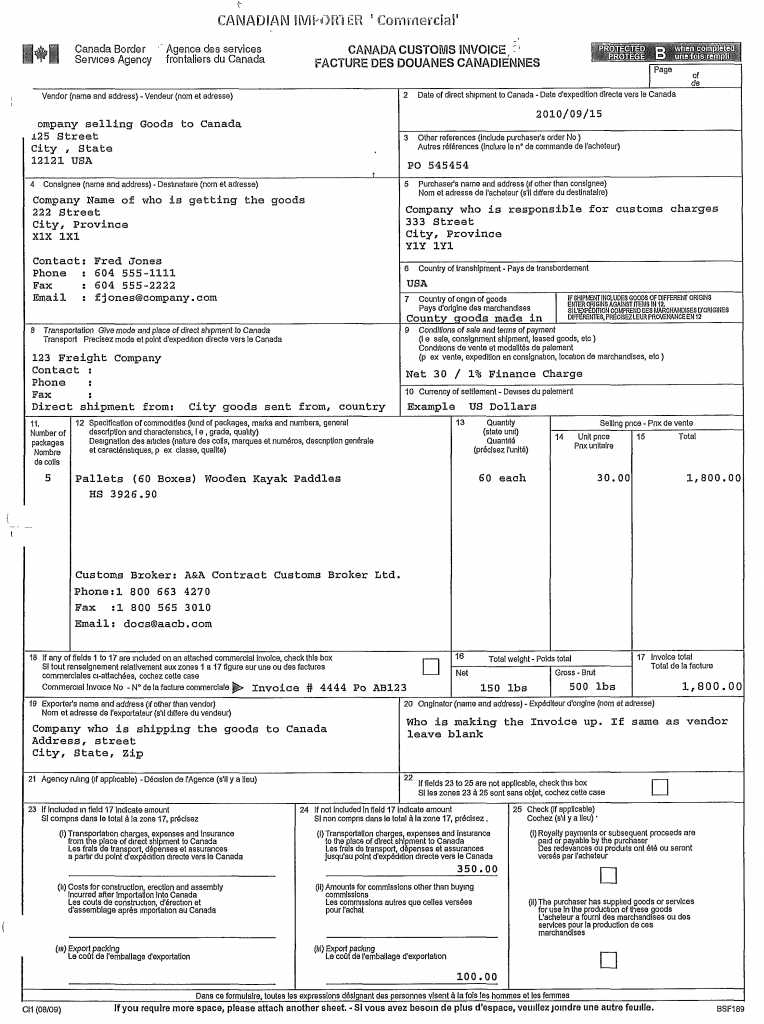
When sending goods across borders, ensuring that all required paperwork is accurately completed is essential for smooth processing. Proper documentation helps in avoiding delays, penalties, and complications with authorities. The right forms and details are necessary for a seamless delivery process, and knowing how to fill them out correctly can save time and effort.
Efficient shipping relies heavily on providing the correct information about the contents, value, and origin of your package. This is particularly important when crossing international borders, where strict regulations are in place. Having a structured form for this purpose can simplify the process and ensure all necessary details are included.
Whether you’re sending personal items or commercial goods, the need for clear and comprehensive documentation is universal. Using the right tools can help you meet requirements without confusion, allowing for a quicker and more reliable shipping experience.
How to Use a UPS Customs Invoice
When preparing for international shipments, it’s crucial to fill out the required documents that detail the contents and value of your goods. This ensures that your package moves through international borders without delays or issues. Knowing how to properly use the shipping forms provided by your courier service will help avoid any complications and ensure that everything is processed quickly.
To begin, accurately describe the items being shipped, including their value, weight, and country of origin. This information is vital for customs authorities to assess any applicable taxes or duties. Make sure each section of the document is filled out clearly, with precise details about what is being sent and its purpose (e.g., gift, sale, or repair).
Double-checking your information before submission is essential. Even small errors in details such as the description or value of the goods can cause delays or rejections. It’s also important to keep a copy of the document for your records in case of any follow-up or issues during shipment.
Why UPS Customs Invoices Matter
When shipping goods internationally, providing the correct paperwork is essential for ensuring that your shipment moves smoothly through the necessary processes. Without the proper documentation, packages may face delays, fines, or even be rejected by authorities. The right forms help expedite the delivery process and ensure compliance with regulations across different countries.
Ensuring Smooth Customs Clearance
Correctly completed forms provide clear information about the contents and value of the items being shipped, which is crucial for customs clearance. Authorities need this information to determine if any duties or taxes apply. With well-organized documentation, the risk of your shipment being held up or delayed at customs is significantly reduced.
Avoiding Additional Fees or Complications
Inaccurate or incomplete paperwork can result in unnecessary delays, additional charges, or even legal issues. By ensuring that all details are properly documented from the start, you can avoid costly mistakes and ensure that your shipment reaches its destination without unnecessary interruptions or unexpected costs.
Essential Information on a UPS Invoice
When preparing documents for international shipping, it’s vital to include specific details that ensure smooth processing through border controls. These details help customs authorities evaluate the contents and value of the items being shipped, as well as determine whether any duties or taxes are required. Providing clear and complete information on these forms is essential to avoid delays and complications.
Accurate item descriptions are one of the most important pieces of information. Every item being shipped must be clearly identified, with specific details about its nature, function, and material. Additionally, the value of each item must be listed correctly to ensure that the proper fees are applied and there are no issues with the shipment.
Sender and recipient information should also be clearly included. Both the sender and recipient’s full contact details, including addresses and phone numbers, help ensure that the shipment can be traced and delivered without any problems. This also helps if there are any questions or issues regarding the contents of the package during transport.
Step-by-Step Guide to Filling Out the Template
Completing the required documentation for international shipments is a straightforward process when you follow the proper steps. By including all necessary details, you ensure that your package moves smoothly through the shipping process and arrives at its destination without delays. Below is a step-by-step guide on how to accurately fill out the essential shipping paperwork.
Step 1: Enter Sender and Recipient Information
Start by providing the full contact details of both the sender and the recipient. This includes names, addresses, phone numbers, and email addresses. Make sure all information is correct to avoid any issues with delivery or communication.
| Field | Details |
|---|---|
| Sender’s Name | Full name of the sender |
| Sender’s Address | Complete street address, city, postal code, and country |
| Recipient’s Name | Full name of the recipient |
| Recipient’s Address | Complete street address, city, postal code, and country |
Step 2: Provide Item Details and Value
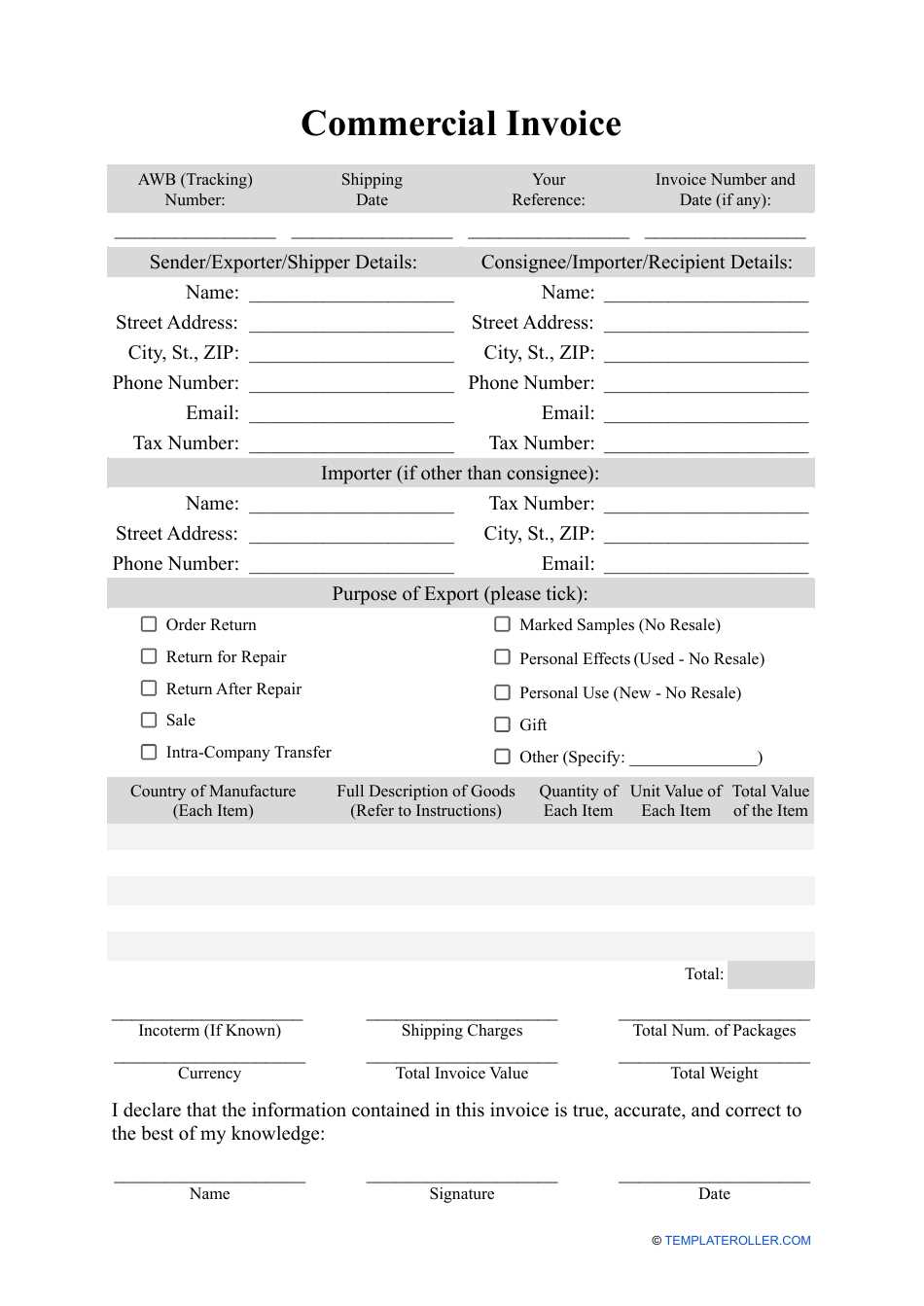
Next, you must list each item being shipped. Include a detailed description, quantity, value, and weight for each. This information helps customs authorities process the shipment and calculate any duties or taxes. Ensure that the value is accurate to avoid delays.
| Item Description | Quantity | Value | Weight |
|---|---|---|---|
| Example Item | 1 | $100 | 2 kg |
Make sure all details are double-checked before submitting to ensure accuracy and avoid complications during transit.
Common Mistakes to Avoid
When completing shipping documentation for international deliveries, it’s easy to overlook small details that can lead to significant delays or complications. Avoiding common errors can ensure a smoother experience and faster processing. Here are some of the most frequent mistakes people make when preparing the necessary paperwork.
Incorrect or Incomplete Information
One of the most common errors is providing incomplete or inaccurate details. Missing fields, incorrect addresses, or incorrect descriptions of the items can result in delays at customs or even rejection of the shipment. Double-checking the accuracy of all information before submitting is essential to avoid unnecessary issues.
| Common Mistake | Impact |
|---|---|
| Missing or incorrect sender/recipient details | Delays in delivery, shipment return |
| Inaccurate item descriptions | Customs delays, incorrect duty fees |
| Incorrect item value or weight | Unnecessary duties, shipment hold-up |
Failure to Follow Specific Guidelines
Another mistake is not adhering to the required format or instructions set by the courier service or regulatory authorities. Each shipment may have unique requirements based on its destination. Ensuring that you follow all specific guidelines will help to avoid complications during transit.
How to Correctly Value Goods for Customs
Accurately determining the value of goods is a critical part of the shipping process, especially for international shipments. Proper valuation ensures compliance with international trade regulations and helps to avoid unnecessary delays or unexpected fees. A correct valuation reflects the true worth of the items, which is essential for customs authorities to assess whether any duties or taxes should be applied.
Understanding the Components of Value
The value of the goods should include all aspects of the transaction. This typically includes the purchase price, any shipping or handling fees, and any additional costs associated with the goods. Be sure to include all costs related to the transaction in the final value to avoid discrepancies or miscalculations that could cause delays at the border.
Using Proper Documentation to Support the Value
To ensure that the goods are valued correctly, it is important to provide supporting documentation, such as receipts, contracts, or invoices from the supplier. This documentation should clearly state the amount paid for the goods and any additional charges. If the value of the items is not easily determined, provide a detailed description of how the value was calculated.
What Documents to Include with Your Invoice
When preparing the required paperwork for an international shipment, it is crucial to ensure that all necessary documents are included to facilitate smooth processing. These documents help authorities verify the details of the transaction and determine any duties or taxes that may apply. Including the correct supporting materials reduces the chances of delays and complications during transit.
Here are some essential documents to include:
- Purchase Receipt or Sales Invoice: This document outlines the transaction details, including the price of the goods and any additional charges.
- Shipping Bill of Lading: Provides information about the transportation of the goods, including the carrier, route, and delivery address.
- Certificate of Origin: Confirms the country where the goods were produced or manufactured, which may be important for duty assessment.
- Export License (if required): A government document granting permission to export specific goods, depending on their nature or destination.
- Customs Declaration Form: A form providing details of the goods being shipped, including quantity, value, and description.
Make sure all documents are clear, accurate, and properly signed to avoid issues during processing at the destination. Each item should be accounted for to ensure customs authorities can assess the goods correctly.
How to Submit Your Shipping Documentation
Submitting the required paperwork is an essential step in ensuring that your international shipment progresses smoothly. Correctly filing the necessary forms and providing the relevant documents helps prevent delays and ensures that your goods are processed without complications. The submission process is usually straightforward, but it is important to follow all steps carefully.
Step 1: Prepare Your Documents
Before submitting your paperwork, ensure that all necessary documents are complete and accurate. This includes ensuring that the value, description, and quantity of items match the supporting documentation such as receipts and bills of lading. Double-check that the details on each document are correct to avoid any confusion during the process.
Step 2: Submit Documents to the Carrier
Once your paperwork is ready, you can submit it to the carrier handling the shipment. This is typically done either online through their platform or directly at a drop-off location, depending on the service you are using. Ensure that the documents are attached securely and that you follow any specific instructions given by the carrier to ensure successful submission.
Understanding Duties and Taxes
When shipping goods internationally, it is important to understand the charges that may apply to your shipment. These fees, often referred to as duties and taxes, are levied by the destination country’s authorities to regulate the flow of goods across borders. The rates and requirements for these charges can vary based on factors such as the value, type, and origin of the items being shipped.
Duties are taxes imposed on goods when they are imported into a country. The rate of duty is typically calculated based on the value of the goods or their classification under the Harmonized System. Some items may be exempt from duties, while others might have a specific rate based on trade agreements between countries.
Taxes can include value-added tax (VAT), sales tax, or other consumption-based taxes that are applied when goods enter the country. These taxes are usually calculated as a percentage of the total value of the goods, including the shipping costs.
Being aware of these charges can help you avoid unexpected costs and ensure that your shipment reaches its destination without delays. It’s essential to provide accurate information about the items being shipped to ensure that duties and taxes are calculated correctly.
Why Accuracy is Crucial in Shipping
When sending goods across borders, ensuring the precision of all details is essential to avoid delays, additional costs, and potential legal issues. Every piece of information, from the product description to its value and origin, plays a significant role in the smooth movement of shipments. Inaccurate information can lead to complications that impact both the sender and the recipient.
Preventing Delays and Unexpected Charges
Incorrect details about the items, their value, or their intended destination can result in delays. Shipments with discrepancies often require additional inspection or clarification, which can cause your goods to be held up at the border. Additionally, inaccurate information can lead to the wrong fees being applied, increasing the cost of shipping.
Avoiding Legal and Compliance Issues
Many countries have strict regulations regarding imports and exports, and providing incorrect or incomplete information can result in compliance violations. In some cases, this could lead to fines or the seizure of goods. It is important to ensure that all documentation is filled out correctly to avoid these legal issues and ensure a hassle-free shipment process.
Accuracy in shipping ensures that the transaction proceeds smoothly, the goods are delivered on time, and that all parties involved comply with international trade regulations. Without it, even the simplest shipment can encounter unnecessary challenges.
Tips for International Shipping Success
Successful international shipping relies on careful preparation, attention to detail, and understanding the complexities of global logistics. Whether you’re sending goods for business or personal reasons, following best practices ensures timely delivery and helps avoid costly errors. Below are some helpful tips to streamline the process and enhance the efficiency of your international shipments.
1. Know the Destination Country’s Regulations
Each country has its own set of rules and regulations when it comes to importing and exporting goods. Before shipping, make sure to research the specific requirements of the destination, such as product restrictions, labeling standards, and necessary documentation. This helps avoid delays and compliance issues.
2. Properly Package Your Items
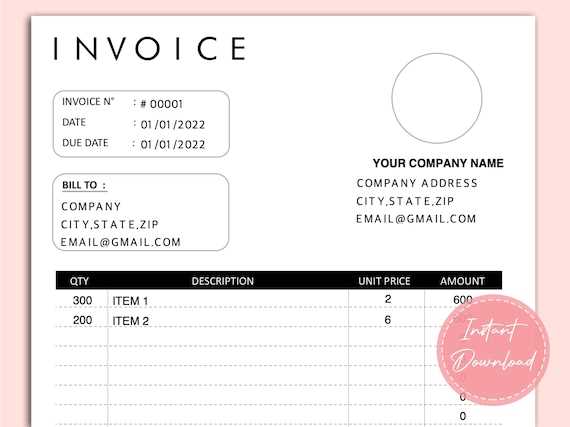
Ensure that your items are packaged securely for the journey. This minimizes the risk of damage during transit and helps prevent unnecessary returns or complaints. Make use of appropriate materials to protect fragile goods and meet the shipping company’s packaging guidelines.
3. Choose the Right Shipping Partner
Selecting a reputable shipping provider can significantly impact the speed and reliability of your delivery. Look for a carrier that offers efficient tracking, insurance options, and a solid customer service reputation. They should also be experienced in international shipments to handle the complexities that come with cross-border logistics.
4. Understand Shipping Costs
Shipping internationally can be expensive. Make sure to understand the full breakdown of costs before shipping, including taxes, duties, and additional charges. Getting a clear estimate of the total expenses helps you avoid surprises and ensure your shipment fits within budget.
5. Keep Track of Shipments
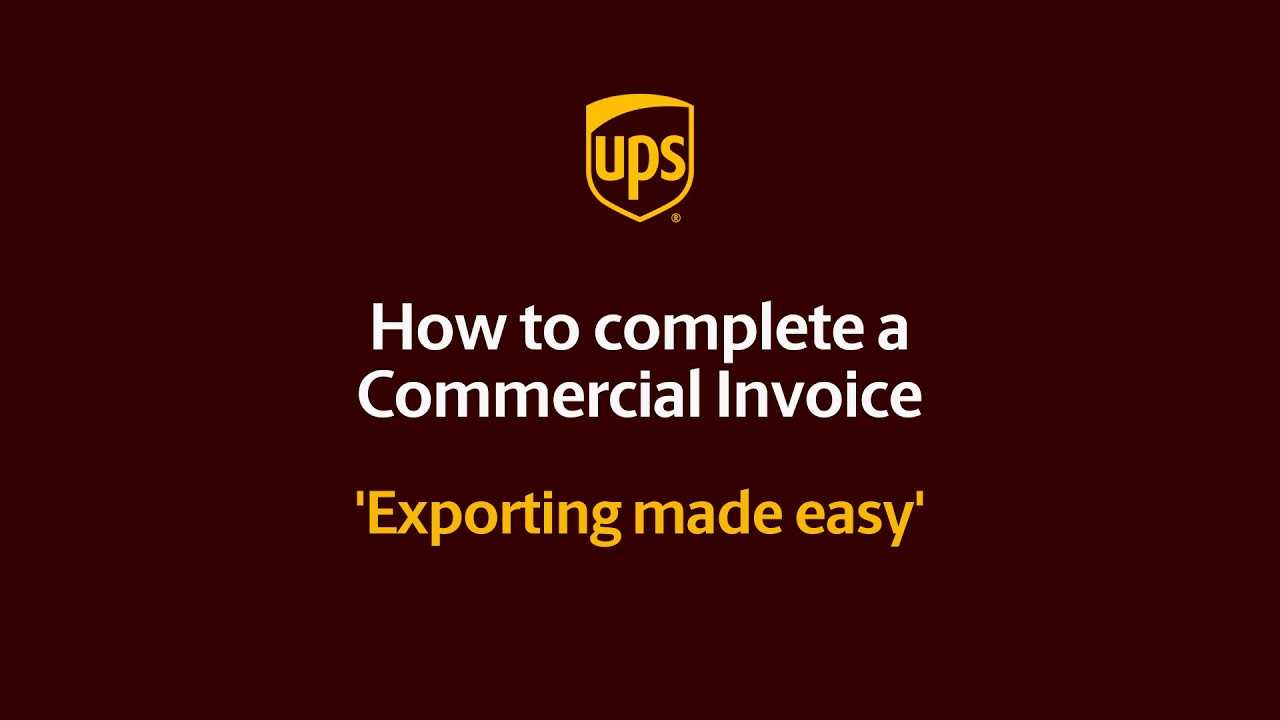
Always use tracking services provided by your shipping carrier to monitor the progress of your shipment. This allows you to stay updated and act quickly if any issues arise, such as delays or customs holds. Early intervention can often prevent bigger problems down the line.
| Tip | Description |
|---|---|
| Know Regulations | Research the destination country’s rules and requirements before shipping. |
| Proper Packaging | Ensure secure packaging to prevent damage and avoid returns. |
| Choose a Reliable Partner | Select a trusted shipping company with international experience. |
| Understand Costs | Be aware of all shipping charges, including taxes and duties. |
| Track Shipments | Monitor your goods to identify potential issues early. |
By following these tips, you can ensure a smoother experience when sending goods overseas. Proper planning, informed decisions, and effective communication with your shipping partner are key to a successful international shipping process.
Using UPS Tools for Easier Invoices
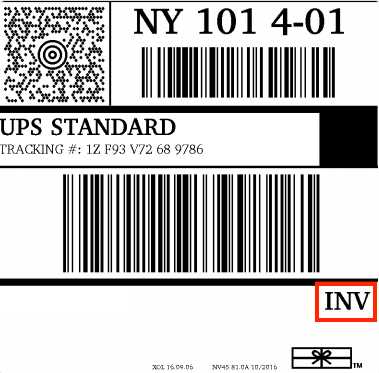
Managing shipping documentation can often be a tedious task, but leveraging the right tools can simplify the process significantly. By utilizing online services and resources designed for streamlining document creation, you can save time, reduce errors, and ensure that all required information is accurately captured. This section highlights some of the tools available to make your paperwork easier and more efficient.
1. Automated Data Entry
One of the most time-consuming aspects of preparing shipping documents is inputting all the necessary details. By using automated systems, you can eliminate the need for manual data entry. These tools pull information from your previous shipments, customer profiles, and product catalogs, reducing errors and improving efficiency. With just a few clicks, you can generate all the required paperwork, including details about the recipient, sender, and the items being shipped.
2. Pre-filled Forms for Faster Processing
Using pre-filled forms can significantly speed up the process. Many online tools allow you to create reusable forms that store common shipping details. This means you can avoid re-entering the same information each time you send a package. Simply select the pre-filled template, update any relevant details, and you’re ready to go.
Additionally, these tools can help you ensure that the required details are in place, such as the description of the items, their value, and proper classification. By automating the process, the chances of missing essential information are minimized, ensuring smoother and quicker transactions.
3. Real-Time Assistance and Support
In case you need help, many shipping platforms offer real-time support and assistance. These resources can guide you through complex requirements and provide answers to any questions you may have about generating or submitting your shipping documents. Having access to expert advice can help reduce confusion and ensure that you’re following the right procedures.
By using these tools, you can simplify the creation of essential shipping documents, saving time and avoiding mistakes. These tools streamline the process, ensuring that your shipments are properly documented and processed quickly.
UPS Invoice Template Features You Should Know
When preparing shipment documents, understanding the features of the required forms can make the process more efficient and accurate. These documents play a crucial role in international transactions, providing essential information for shipping, customs clearance, and billing. Knowing the key attributes of the forms you are working with can help you ensure smooth transactions and prevent delays.
1. Detailed Item Breakdown
One of the most important features of these forms is the detailed item breakdown. This section includes a description of each item being shipped, its quantity, and its individual value. Having this information clearly listed ensures that all parties involved in the shipment process understand exactly what is being transported. Accurate itemization is especially important for assessing taxes, fees, and compliance with shipping regulations.
2. Automatic Currency Conversion
Another feature that simplifies the process is the automatic currency conversion option. These forms often allow you to enter values in your local currency, and the system will automatically convert them to the required currency based on current exchange rates. This feature saves you from needing to manually calculate conversions, reducing the likelihood of errors.
Additionally, this feature ensures that the values provided are up-to-date, ensuring that your shipment meets the financial requirements of the destination country. Keeping track of fluctuating exchange rates is vital to preventing discrepancies and ensuring accurate billing.
3. Pre-filled Recipient and Sender Information
Many forms come with options to store and reuse recipient and sender information. By saving these details in the system, you can quickly populate forms without re-entering them each time. This not only speeds up the document creation process but also reduces the risk of errors that may occur with manual entry.
Utilizing these features helps you streamline your shipment preparation process and reduces the chances of delays or issues at any stage of the shipping journey. By taking advantage of these convenient options, you can ensure that your documentation is complete and accurate every time.
How to Update Your UPS Invoice Information
Ensuring that your shipping documents are up-to-date is essential for a smooth transaction process, especially when dealing with international shipments. Keeping your records accurate prevents delays and errors, allowing for efficient processing and clearing of goods. Here’s a guide on how to easily make the necessary updates to your shipment-related information.
To begin, review the details provided on the document. Verify that the sender’s and recipient’s information are correct, including names, addresses, and contact details. Any inaccuracies in this section can cause delays or failed deliveries. If there are changes in the destination or sender’s location, ensure that these adjustments are reflected promptly.
Next, check the item description, quantity, and declared values. If there has been any change in the shipment, such as added or removed items, these updates must be reflected accurately. Inaccurate or missing product details can lead to complications in processing your shipment or issues with customs authorities. Additionally, always ensure that the value of goods is correct and in accordance with current market prices or the transaction agreement.
If the shipping cost has changed or additional fees need to be included, make sure these are updated as well. Most forms offer a section for specifying total charges, so it’s crucial to include all necessary fees to avoid confusion and ensure proper billing.
Once you’ve reviewed and made the necessary changes, double-check that all information is accurate before resubmitting your documentation. This will help ensure that your shipments progress smoothly through all stages of delivery and customs procedures.
How to Handle Discrepancies with UPS
Occasionally, discrepancies can arise during the shipping process, causing issues such as incorrect charges, lost packages, or incomplete documentation. It’s important to address these situations promptly to minimize delays and ensure that your shipment is processed efficiently. Here are steps to help you manage and resolve any discrepancies that may arise.
If you notice an issue with your shipment, the first step is to identify the specific problem. Common discrepancies include:
- Incorrect billing amounts or charges
- Missing or damaged items
- Delivery delays or wrong delivery addresses
- Inaccurate or incomplete paperwork
Once you’ve identified the issue, the next step is to contact customer support. It’s crucial to provide all relevant information, including tracking numbers, shipment details, and any discrepancies you’ve encountered. To help resolve the situation faster, follow these tips:
- Gather all necessary documentation, such as receipts, shipment tracking details, and any correspondence regarding the shipment.
- Clearly explain the discrepancy, including how it differs from what was originally agreed upon or expected.
- Request a clear explanation from the service provider and inquire about steps they can take to resolve the issue.
If the problem persists, consider escalating the issue to higher levels of customer support or utilizing available dispute resolution services. Additionally, keep records of all your communications, as this may be helpful if further follow-up is necessary.
By staying proactive and organized, you can efficiently handle discrepancies and ensure that your shipments proceed smoothly in the future.
Benefits of a Shipping Documentation Form
Utilizing a well-structured shipping documentation form offers a range of advantages, especially when dealing with international shipments. These forms help streamline the process, ensuring all required details are accurately recorded and shared with the relevant parties. This section explores the key benefits of using such a form.
Increased Accuracy and Efficiency
One of the main advantages of using a standardized form is that it reduces the chances of errors. When all necessary fields are included and clearly defined, the risk of omitting critical details or entering incorrect information is minimized. This leads to:
- Fewer delays in processing shipments
- Reduced chances of customs issues
- Faster clearance through shipping checkpoints
Cost and Time Savings
When using a structured form, you can avoid the need for multiple revisions and corrections, saving both time and money. By reducing paperwork errors, you also help prevent unnecessary fines or additional charges. Key benefits include:
- Quicker processing time for international shipments
- Lower administrative costs associated with reprocessing documents
- Fewer instances of delayed or returned shipments
Incorporating a standardized shipping documentation form into your operations ensures smoother, more efficient international shipping. It also helps build trust with customers and partners by demonstrating a commitment to accuracy and reliability.